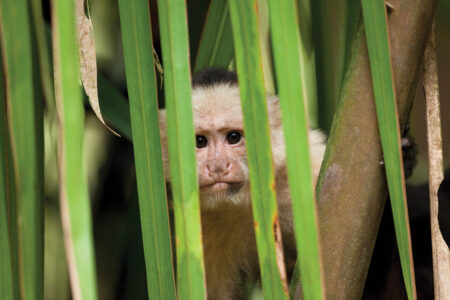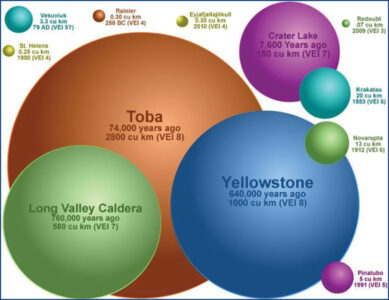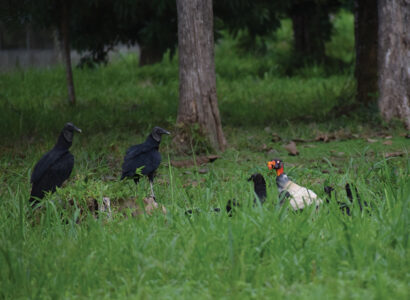The Nature of Mother Nature
I have never written a book. The two that have been published with my name as author, Monkeys Are Made of Chocolate, and Where Tapirs and Jaguars Once Roamed, are collections of articles that were previously published in local magazines, mostly Quepolandia. So, when I decided to write a book, I was in for a new experience, and like all new experiences, it didn’t go as smoothly as I had imagined. It is moving forward, albeit slowly, and I would like to share a couple of excerpts with my readers.
 I am not a biologist or any other type of scientist, but I have the good fortune to have lived in or near a tropical rainforest, the habitat that contains more biomass and biodiversity than any other on the planet, for the last 50 years. I learned to love what I call the jungle and have spent a good deal of my time within its embrace. Incidentally, the word “jungle” is looked down upon by most biologists, but I love it and will use it often. To me “jungle” is synonymous with “rainforest”.
I am not a biologist or any other type of scientist, but I have the good fortune to have lived in or near a tropical rainforest, the habitat that contains more biomass and biodiversity than any other on the planet, for the last 50 years. I learned to love what I call the jungle and have spent a good deal of my time within its embrace. Incidentally, the word “jungle” is looked down upon by most biologists, but I love it and will use it often. To me “jungle” is synonymous with “rainforest”.
I think my love affair with Mother Nature began with my first sighting of a monkey in the wild. A movement caught my attention as I was hiking by myself, and there it was, a monkey in the middle of the jungle. A storybook animal in a storybook setting. For me, a novice, the sighting was so extraordinary that it didn’t quite seem real. I had seen monkeys in the zoo, but this was different. It turned and looked at me. For one fleeting moment our eyes met and held. Then the monkey scampered on up the tree and disappeared within the leafy fronds at the top. That was the beginning of a life-long relationship, and it has been growing and evolving ever since. It has now reached the point that I feel compelled to write about Mother Nature, and what She is to me.
Search anywhere you like for a description or definition and mostly you will hear about the creative and nurturing aspects of Mother Nature. And it is true, Mother Nature is life-giving, creative and nurturing. Yet the Mother Nature I know can also be cruel, destructive, unforgiving, violent, and uncaring. In reality, all of these concepts are inventions of the human mind. Mother Nature herself knows no good or evil, fair or unfair, pity or mercilessness. She doesn’t judge or qualify living beings. Everything simply IS, and every living thing struggles to survive and perpetuate its own kind, and in so doing, to acquire as much of the earth’s resources as possible.
 POWER
POWER
The first atom bomb ever deployed, was exploded over Hiroshima, Japan on August 25, 1945. In that blast 80,000 people died instantly. Human beings were the perpetuators of that destruction, not Mother Nature. Some people believe that humans are headed on a path that will destroy the planet. That idea is pure arrogance typical of humanity. It is much more likely that Mother Nature will destroy humanity. Let’s take a look at a small sample of what Mother Nature is capable of when she takes a notion to unleash her power. There used to be an island, one of many, in Indonesia about 20 km long with a mountain called Rakata on one end and a volcano called Krakatau on the other end. One day in August of 1883 Krakatau exploded with a force 10,000 times greater than that of the bomb exploded over Hiroshima. Twenty cubic kilometers of the earth were thrown five times as high as a commercial airliner normally flies, and the blast was heard as far away as the distance between New York and Los Angeles. The only trace left of the island were the incinerated remains of Rakata. The explosion of Krakatau is but a small sample of Her power. She is capable of much more. Tambora in 1815 ejected 100 cubic kilometers of the earth into the atmosphere. And 640,000 years ago, when Yellow Stone exploded, 1000 cubic kilometers of the earth were ejected into the atmosphere. It is worth mentioning that Mother Nature’s creative aspects are nothing short of awesome. In the next 100 years after Krakatau, for example, She took the remains of the island, a chunk of rock called Rakata, which was sterile and devoid of life, and transformed it into a lush tropical island.
 CRUELTY
CRUELTY
One chapter of Monkeys Are Made of Chocolate, tells a story about vultures and a cow that was having difficulty giving birth to a large calf. When I found her, she was lying flat on her side, exhausted, unable to stand up and straining for all she was worth trying to expel the calf, which was stuck in the birth canal with its nose and one front foot exposed. They were surround by vultures. Part of one of the calf’s toes, a chunk of its nose and half of its tongue were missing, eaten by the vultures, as was part of the cow’s vulva. The ends of two of the cow’s teats had been eaten, and milk was dribbling out of the stubs. She was moving her head around frantically in an attempt to bat away several vultures that were trying to pluck her eyes out. To this day I remember the pain I felt upon seeing the desperation and anguish in the eyes of that cow. My point in bringing up this incident—that will surely provoke revulsion in some readers—is to illustrate that I, a human being, was repulsed by the sight and felt extreme hatred for the vultures, but Mother Nature saw it much differently. From Her point of view the vultures were simply doing what they do to survive. Normally they eat carrion, but when flesh of any kind is available, dead or alive, they go for it and consume as much as they can as fast as they can for as long as they can before a larger more aggressive scavenger comes around. They were indifferent to the fact that both the cow and calf were still alive. Food is food and competition is fierce. Waiting around for the cow and calf to die isn’t an option.
I chased away the vultures, re-positioned the calf to facilitate the birth, and both the cow and the big bull calf recovered and lived long, healthy lives. The mother had always been one of our milk cows. We had several cows that produced enough milk that we could take half of it for ourselves and the other two families that lived on Hacienda Barú and leave the other half for the calf. That particular cow had two teats that were short because the vultures had eaten the ends. This earned her the nickname “teta cortada” meaning cut teat in English.
This will give you a small hint of the idea I am trying to convey in the book that will be titled, The Nature of Mother Nature.

